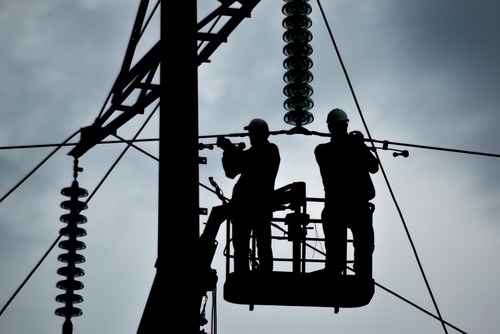Utility industry looks for federal policy agenda that facilitates infrastructure investments

As the U.S. utilities industry invests billions of dollars to upgrade outdated infrastructure, industry leaders said on Monday they want the federal government under the new Trump administration to drive public policy in a direction that supports economic growth and affordable and reliable markets.
The critical infrastructure investments needed in the 21st century run the gamut, including modernizing the electrical grid, building new oil and natural gas pipelines, replacing aging water pipes and expanding broadband.
Stakeholders in those sectors outlined the investment needs and how government can help the industry harness innovation at the National Association of Regulatory Utility Commissioners’ winter committee meeting in Washington.
Trump has advanced the concept of deploying up to $1 trillion of new public funds for infrastructure projects, what would be a much-needed and welcomed investment.
“We should be investing in the grid, the gas infrastructure, and the water and wastewater infrastructure because it really is the base of our commerce in this country,” said Chris Franklin, CEO & president of Aqua America, one of the largest publicly traded water utilities. “If we’re going to have long-term sustainable economic development we need to have strong infrastructure.”
The industry also is working to ensure the policy agenda at the federal level more directly aligns with the goals of states.
“We’re getting a realization that this country for too long has separated an environmental policy from an energy policy,” Chris Crane, president and CEO of Exelon Corp. and vice chairman of the Edison Electric Institute. “And competing at the federal level with the state level has made it very difficult for markets to be formed efficiently, and made it very difficult for predictability of investments going forward.”
EEI’s electric company members are projected to invest $120.8 billion in 2016 in projects that include smart grid technologies and security measures that improve reliability and resiliency.
“Leadership at the federal level either needs to come up with a common policy or get out of the way and have the states be allowed to work with the Regional Transmission Organizations (RTOs) and design the markets how the state desires,” Crane said.
He added that with more clarity from the Federal Energy Regulatory Commission, states and RTOs could work together better to provide consistent, cost-effective and cleaner energy solutions.
The states Exelon serves want affordable and reliable power, but also clean energy, Crane noted.
One clean energy source of power generation, natural gas, has seen a tremendous expansion since 2004. The backdrop to that growth has been price instability related to the discoveries of natural gas reserves in the Marcellus and Utica shale regions of the United States, combined with hurricane disruptions in the Gulf Coast in 2005.
“Why we need the infrastructure to continue to build out is primarily because it helps the businesses, whether it is an industrial or commercial customer, to help their bottom line and it creates jobs. The other part is the residential customers: it puts discretionary income back into their pockets,” said Pierce Norton, president and CEO of ONE Gas Inc. and the American Gas Association board chairman.
Between 2004-2014, the industry spent $52 billion in the United States building out natural gas infrastructure. The Department of Energy predicts between now and 2030, those numbers could total about $40 billion, Norton said.
Meanwhile, the U.S. broadband sector has invested $1.5 trillion in infrastructure and that figure will surely grow, given that there are still 20 million Americans who don’t have access to broadband in rural areas.
“We have to understand as we think of future innovation in telecom, that it parallels evolution of equally smart policy frameworks,” said Jonathan Spalter, president and CEO of USTelecom. “We have to develop policy infrastructure that is as smart and innovative as the broadband technology is,” he added.
One place to start is by modernizing the Telecommunications Act of 1996, Spalter said, to ensure policies don’t inhibit the evolution of broadband.
